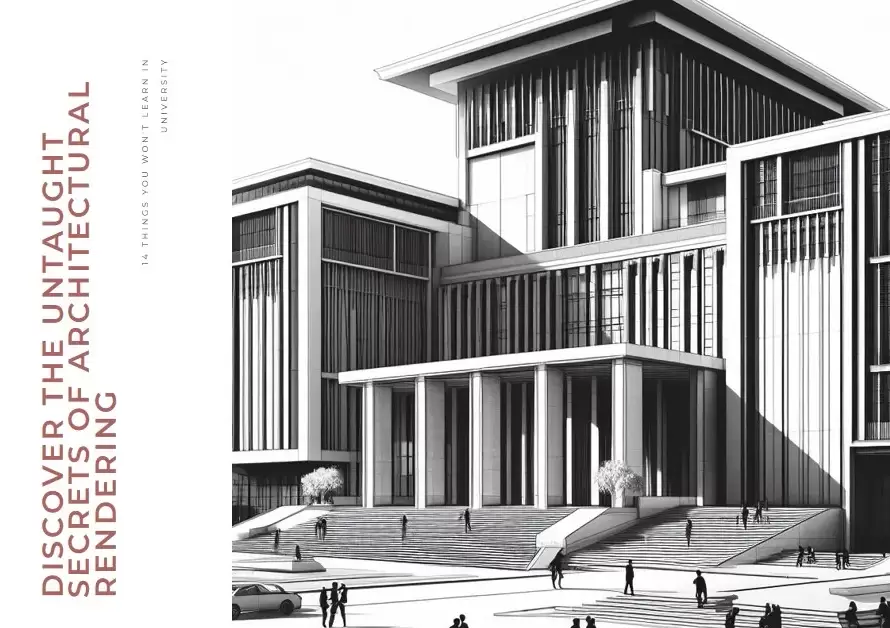
Table of Contents
Defining architectural photography and its significance.
Architectural photography is an art form that extends beyond simply capturing the physicality of buildings. It is about telling a story through the lens, highlighting the unique design elements, and evoking emotions in viewers. Unlike other forms of photography, architectural photography requires a keen eye for composition, lighting, and detail. Every angle and every shadow must be carefully considered to create stunning visual narratives that bring structures to life.
The significance of architectural photography lies in its ability to document and preserve our built environment. Through photographs, we are able to capture fleeting moments in time, documenting the evolution of cities and leaving a historical record for future generations. Moreover, architectural photography helps architects showcase their designs and allows developers to market their properties effectively. By portraying spaces in their most flattering light while maintaining authenticity, photographers contribute to shaping public perception and appreciation of architecture as an art form. Through their lenses, they can heighten our collective understanding of space and inspire us with new perspectives on how we interact with our surroundings.
History: Tracing the origins of architectural photography.
Architectural photography has a rich history that dates back to the early days of photography itself. In the mid-19th century, as photography was becoming more widely accessible, photographers began to turn their lenses towards capturing the built environment. These early pioneers saw the potential for architecture to be recorded and preserved in a way that had never been done before.
One of the first notable architectural photographers was Frederick Evans, who rose to prominence in the late 1800s. Evans embraced long exposures and dramatic lighting techniques to capture the grandeur of iconic buildings such as cathedrals and castles. His work not only showcased the beauty and intricacy of these structures but also contributed to an emerging appreciation for architecture as an art form in its own right.
Another influential figure in architectural photography is Julius Shulman, who came into prominence during the mid-20th century. Shulman’s photographs perfectly captured mid-century modernist architecture with their impeccable composition and attention to detail. Through his lens, he not only immortalized iconic buildings like Frank Lloyd Wright’s Fallingwater but also helped shape public perception of modernist design as sleek, elegant, and forward-thinking.
The origins of architectural photography are deeply intertwined with advancements in technology and artistic vision over time. From Evans’ dedication to creating painterly compositions through long exposures to Shulman’s mastery of capturing sleek lines of modernist architecture, each photographer has left a lasting imprint on how we perceive and appreciate architectural beauty today.
Techniques: Exploring the technical aspects of capturing architecture.
When it comes to architectural photography, exploring the technical aspects of capturing buildings and structures is crucial. One technique that can greatly impact the final image is using a tilt-shift lens. This specialized lens allows photographers to correct converging lines and create straight vertical edges, ensuring that the buildings appear true to life. Additionally, using a wide-angle lens can help capture the expansive scale of a structure and provide a unique perspective that showcases its grandeur.
Another technique that has gained popularity in architectural photography is long exposure. By setting up their tripod and using longer shutter speeds, photographers are able to capture the movement of people or vehicles passing by, adding depth and dynamism to their images. This technique can also bring out interesting light trails from cars or emphasize the play of light and shadow on a building’s facade.
Lastly, paying attention to composition is paramount in capturing architecture effectively. The rule of thirds can be applied by placing prominent elements such as doorways or windows along these imaginary gridlines, creating balance and visual interest within the frame. Additionally, experimenting with different angles and perspectives can result in more dynamic compositions that showcase unique details or highlight specific architectural features.
By exploring these technical techniques in architectural photography, photographers are able to beautifully capture buildings and structures from new perspectives while showcasing their intricate design elements.
Composition: Understanding how to frame and compose architectural shots.
In architectural photography, framing and composition play a crucial role in capturing the essence of a building. It is all about finding the right angles, lines, and perspectives that highlight the unique features and design elements of the structure. One effective technique is to use leading lines, such as walkways or roadways, to guide the viewer’s eye towards the main focal point. This creates a sense of depth and draws attention to important details.
Another key aspect of composition in architectural photography is understanding how different materials interact with light. Glass buildings reflect their surroundings in interesting ways, while concrete structures create stark contrasts between light and shadow. By experimenting with these elements, photographers can capture striking images that explore the interplay between architecture and its environment.
Ultimately, mastering composition in architectural photography requires a keen eye for detail and an understanding of how space can be framed to create powerful visual narratives. By carefully considering angles, lines, and lighting conditions, photographers can capture not only the physicality of a structure but also its atmosphere and emotional impact on those who experience it firsthand or through photographs.
Lighting: Utilizing light to enhance architectural photographs.
When it comes to architectural photography, lighting is a crucial element that can make or break a shot. Effective use of light can enhance the details and textures of a building, creating depth and dimension in the photograph. It can also help to highlight certain architectural features or create interesting shadows that add drama to the composition.
One technique that photographers often utilize is the golden hour, which refers to the period just before sunrise or sunset when the natural light has a warm and soft quality. During this time, buildings are bathed in a flattering glow, resulting in stunning photographs with rich colors and long shadows. By planning their shoots around these specific times of day, photographers are able to take advantage of this magical lighting for captivating architectural images.
Another technique that can be used to enhance architectural photographs is artificial lighting. This involves bringing additional light sources such as strobes or continuous lights onto the scene to illuminate specific areas or add extra drama. By carefully positioning these lights, photographers can create interesting contrasts between light and shadow, accentuate certain details or draw attention to important elements within the composition.
Overall, lighting plays an essential role in capturing compelling architectural photographs. Whether by harnessing natural light during the golden hour or using artificial lighting techniques, photographers have the power to transform an ordinary building into an extraordinary visual masterpiece through creative use of light. So next time you’re out shooting architecture, remember – don’t just rely on luck for good lighting; instead, master it yourself for truly breathtaking results!
Equipment: Discussing the essential gear for architectural photography.
When it comes to architectural photography, having the right equipment is crucial. Your camera should ideally have a full-frame sensor for capturing intricate details and wide-angle shots. An excellent choice would be a DSLR or mirrorless camera, enabling you to shoot in manual mode for complete control over settings.
Additionally, investing in a high-quality tripod is essential for taking sharp images with long exposures. It helps eliminate any camera shake and ensures your photos are crisp and clear. Look for a sturdy tripod that can support the weight of your camera and lens combination.
Another piece of gear that can greatly enhance your architectural photography is a tilt-shift lens. This specialized lens allows you to correct perspective distortion, making vertical lines appear straight rather than converging. It’s particularly useful when photographing towering structures or compact interiors where getting everything in frame without distortion can be challenging.
Having the right equipment is just one part of capturing stunning architectural photographs – skill and creativity also play important roles. However, by investing in quality gear like a full-frame camera, tripod, and tilt-shift lens, you’re setting yourself up for success from the start.
Conclusion: Summarizing the importance and beauty of architectural photography.
In conclusion, architectural photography plays a vital role in capturing the essence and beauty of buildings. From historic landmarks to modern skyscrapers, these photographs enable us to appreciate the intricate details and designs that go into creating architectural masterpieces. Not only does it serve as a documentation of a structure’s existence, but it also allows us to explore different perspectives and angles that may otherwise go unnoticed.
Moreover, architectural photography can act as a powerful tool for communication and storytelling. Each photograph tells a unique narrative about the building, its purpose, and its significance in the surrounding environment. It showcases the relationship between architecture and its surroundings, highlighting how buildings shape our cities and landscapes. Furthermore, through this genre of photography, we can admire the interplay of light and shadows on structures throughout different times of day or seasons—adding depth and dimension to images that evoke emotions within viewers.
Overall, architectural photography invites us to look beyond the mere physicality of a building; it encourages us to appreciate it as an art form that reflects human creativity and ingenuity. By capturing every angle, texture, detail, and atmosphere in photographs, architects can share their vision with audiences all over the world. Through these stunning visuals, we gain a deeper understanding of how architecture shapes our lives—a reminder that beauty lies not only in nature but also in man-made constructions designed to inspire awe for generations to come.



